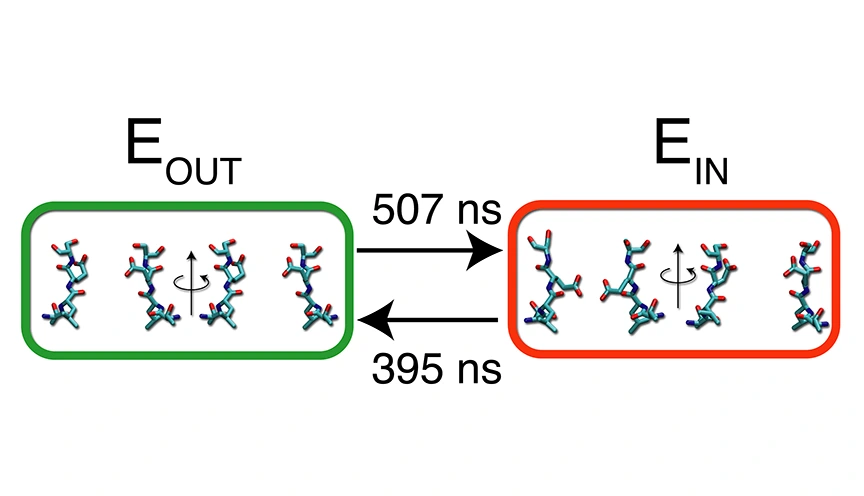Na+ channels have high-conductivity to sodium ions, while at the same time being almost completely impermeable to potassium ion. The first characteristic suggests loose atomic interactions between the permeating particles and the channel. On the other hand, it is hard to imagine how selectivity between two similar ion species might be possible under these loose atomic interactions. In this study, we observed state transitions of the NaVMs bacterial Na+ channel in the presence of potassium ions but not in identical atomic simulations in the presence of sodium ions. When NaVMs is occupied by Na+, it forms loose interactions with the permeating ions. Instead, when occupied by K+, the protein modifies its structure, becoming less flexible, and creating strong interactions with the permeating particles. This kind of state transitions might explain how a protein can appear as a liquid-like dynamic pore for some ion species, while at the same time being completely impermeable to other, similar, ion species. We believe that analogous mechanisms might be at work in other Na+ channels and in other families of ion channels as well.
Furini, S. & Domene, C. Ion-triggered selectivity in bacterial sodium channels. Proc Natl Acad Sci USA 22, 5450–5455 (2018).

